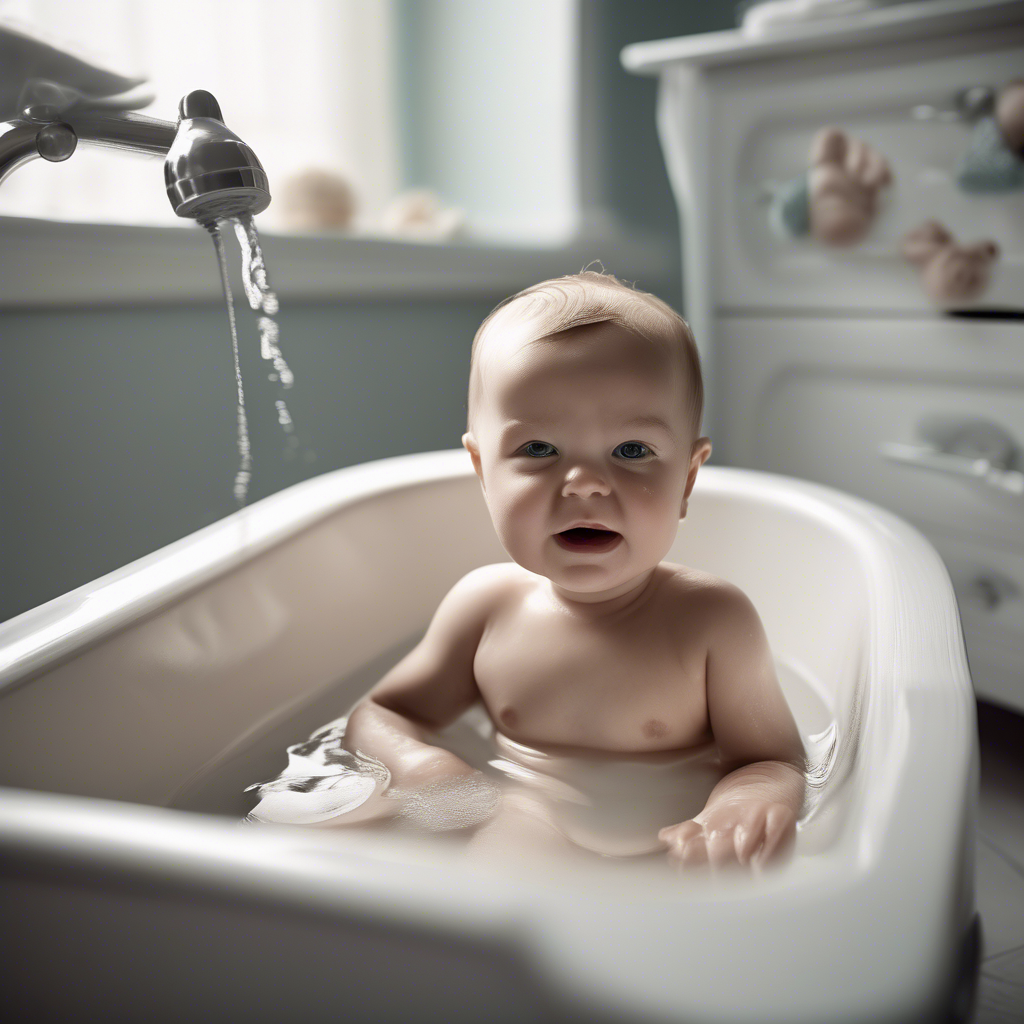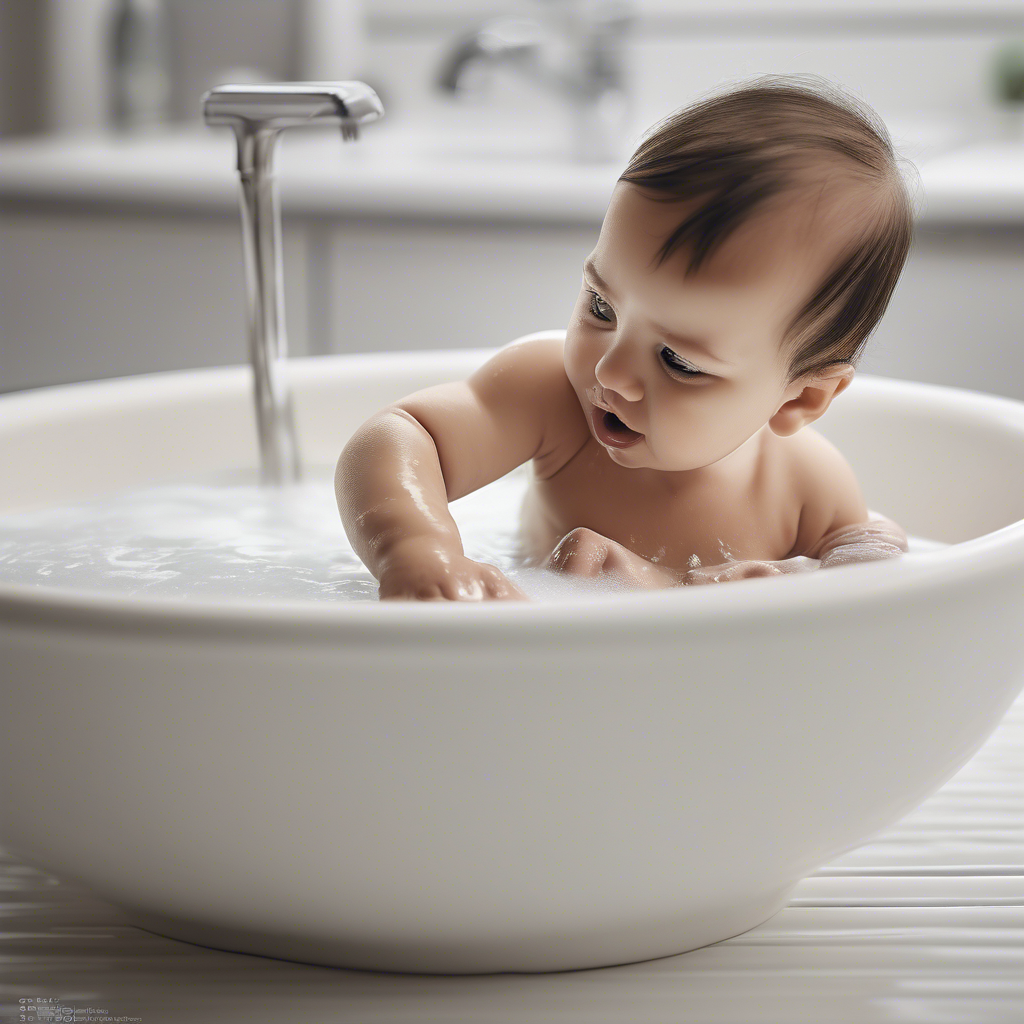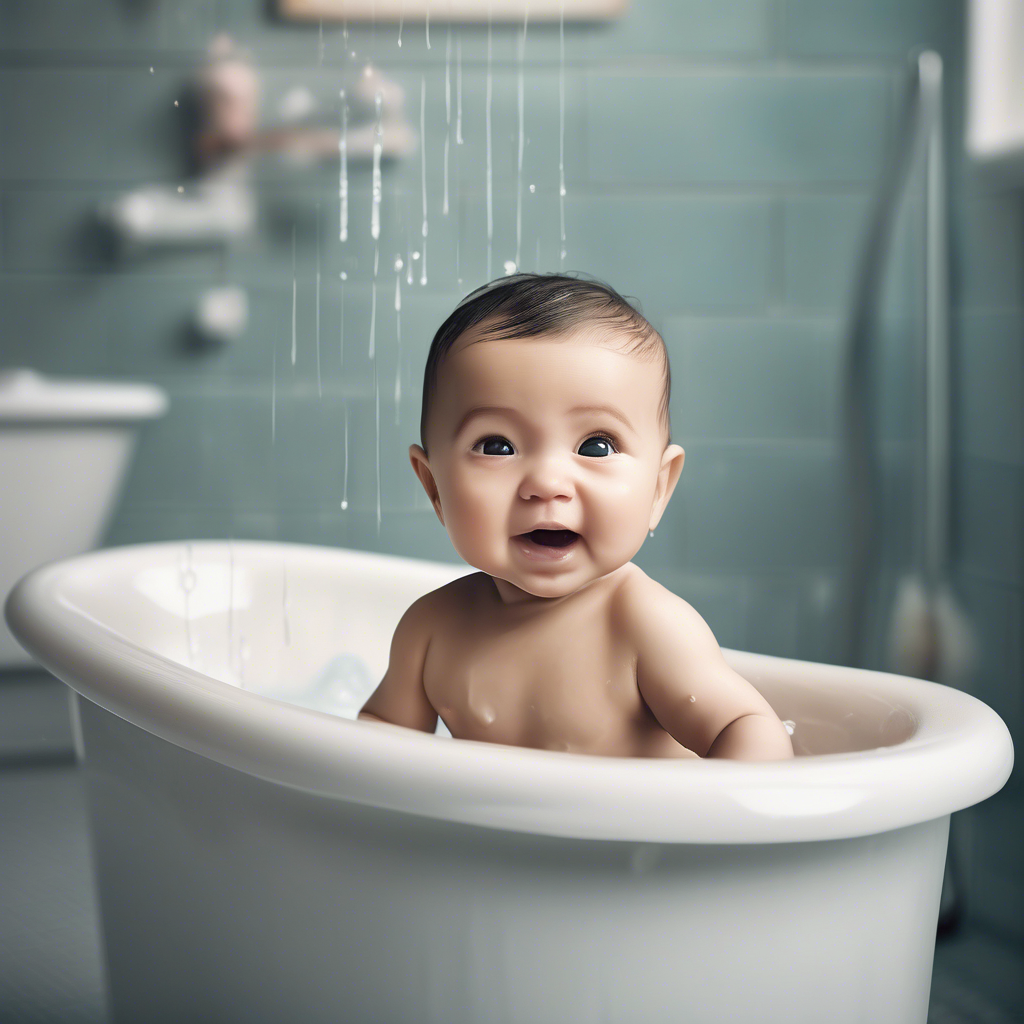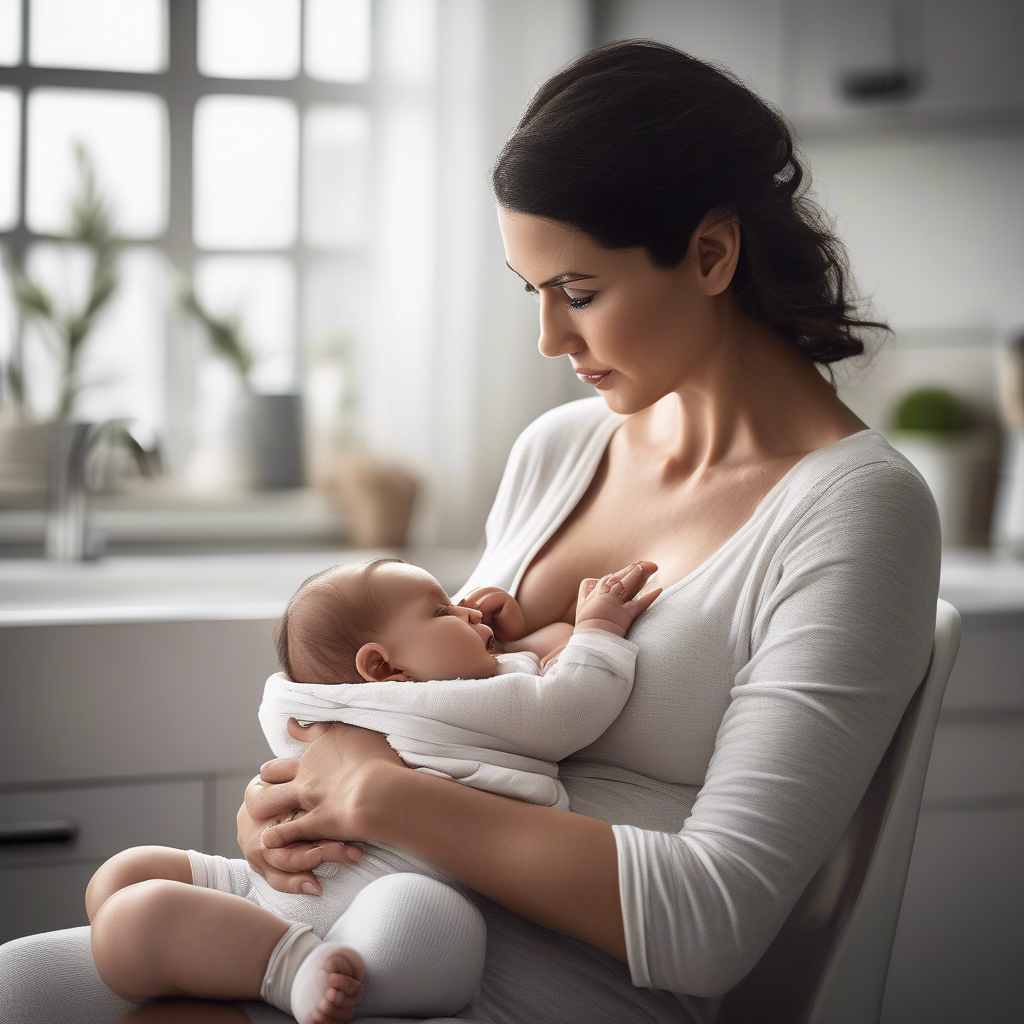Baby’s First Bath: A Step-by-Step Guide for New Parents

Welcoming a newborn into your life is a whirlwind of emotions and responsibilities. Among the many firsts you’ll experience is your baby’s first bath, a milestone that brings both excitement and trepidation. Bathing a newborn can seem daunting for new parents, who often wonder how to ensure their baby’s safety and comfort during this delicate process.
This guide is designed to demystify the process of bathing a newborn, offering a comprehensive, step-by-step approach that makes the task manageable and enjoyable. Understanding the nuances of your baby’s first bath is crucial, not only for hygiene but also for enhancing the bond between you and your little one. By the end of this article, you’ll be equipped with best practices, essential tips, and confidence to make bath time a cherished routine.
In the sections that follow, you’ll discover how to prepare for the first bath, the step-by-step process to ensure a safe and soothing experience, tips for choosing the right products, and how to handle common challenges. Let’s dive in and make your baby’s first bath a positive experience.
Preparing for Your Baby’s First Bath
Before you begin the actual bathing process, preparation is key. Ensuring you have all the necessary supplies at hand can make the experience smoother and safer for both you and your baby. A well-prepared setup not only saves time but also minimizes stress, which is beneficial for your newborn who picks up on parental cues.
Gathering Supplies: You’ll need a baby bathtub or a clean sink, mild baby soap, a soft washcloth, and a towel. Make sure the room is warm enough to prevent your baby from getting cold. According to the American Academy of Pediatrics, the ideal room temperature for newborns during bath time is around 75°F (24°C)
.
Safety First: Ensure that all your supplies are within arm’s reach, so you never have to leave your baby unattended. Water temperature should be lukewarm, around 100°F (38°C)
. You can use a bath thermometer or test the water with your wrist or elbow.
Set the Mood: Consider playing soft, calming music to create a soothing environment. This can help relax both you and your baby, making the bath experience more enjoyable. Remember, preparation is not just about the physical setup;
it’s also about creating a positive atmosphere.
Step-by-Step Guide to Bathing a Newborn
Now that you’re prepared, it’s time to dive into the step-by-step process of giving your newborn their first bath. Following these steps will help ensure that the bath is safe, efficient, and enjoyable for your baby.
Step 1: Gently Undress Your Baby
Begin by undressing your baby in a warm room. Keep a towel nearby to quickly wrap them up once the bath is over. This helps maintain their body temperature, which is crucial since newborns can lose heat rapidly.
Step 2: Support and Lower Your Baby into the Bath
Carefully support your baby’s head and neck with one hand, while using the other hand to guide their feet into the water first. Gradually lower the rest of their body until they’re comfortably resting in the bath. Always keep one hand on your baby to ensure their safety.
Step 3: Cleanse with Care
Use a soft washcloth to gently cleanse your baby’s body, starting with their face and moving downwards. Avoid using too much soap, as newborn skin is sensitive. Rinse with clean, lukewarm water to remove any soap residue.
Step 4: Dry and Dress
Once the bath is complete, lift your baby out of the water and wrap them immediately in a soft towel. Gently pat their skin dry, paying special attention to skin folds where moisture can linger. Dress your baby in clean clothes, and enjoy the post-bath cuddles.
Choosing the Right Products for Bath Time
Selecting the right bath products is essential for protecting your baby’s delicate skin. Not all baby products are created equal, so it’s important to know what to look for when shopping for bath essentials.
Opt for Mild, Fragrance-Free Products
When choosing soaps and shampoos, opt for those that are specifically formulated for newborns. Fragrance-free, hypoallergenic products are ideal, as they minimize the risk of skin irritation. According to a study by the Journal of Pediatrics, fragrance is a common irritant for sensitive newborn skin.
Consider Organic and Natural Options
Organic and natural products can be a great choice for parents concerned about chemical exposure. These products often contain fewer synthetic ingredients, reducing the likelihood of adverse skin reactions.
Test Products Before Use
Before using a new product, perform a patch test on a small area of your baby’s skin. This helps ensure their skin doesn’t react negatively. If no redness or irritation occurs after 24 hours, the product is likely safe to use.
Handling Common Challenges During Bath Time
Even with the best preparation, bath time can sometimes present challenges. Understanding common issues and how to address them can make the process smoother and more enjoyable for both you and your baby.
Dealing with Crying or Fussiness
It’s not uncommon for babies to cry during their first few baths. To help soothe them, try speaking softly or singing as you bathe them. Holding your baby’s hand or gently pouring water on them can also offer comfort.
Managing Newborn Colic
If your baby experiences colic, which affects about 20%
of infants, bath time can be a helpful tool. Warm water can have a calming effect. Additionally, gently massaging your baby’s tummy during a bath can help alleviate colic symptoms. For more ideas, explore the best remedies for newborn colic.
Ensuring Safety and Avoiding Accidents
Safety is paramount during bath time. Always keep a firm grip on your baby, and never leave them unattended. Using a non-slip mat can prevent slips, and keeping bath water at a safe level (just a few inches)
minimizes drowning risks.
To further enhance your understanding, consider watching video tutorials that demonstrate the entire process of a newborn bath. These visual guides can provide additional insights and tips, making it easier to visualize and execute each step confidently.

Frequently Asked Questions
How often should I bathe my newborn?
Newborns do not need daily baths. Bathing them 2-3 times a week is sufficient in the early months. Over-bathing can lead to dry skin. Instead, focus on regular diaper changes and cleaning their face, neck, and hands daily.
What should I do if my baby is afraid of water?
If your baby seems afraid, try introducing water gradually. Start with sponge baths and slowly transition to a full bath. Using a bath seat can help them feel more secure. Offering reassurance and maintaining a calm demeanor can also ease their anxiety.
Can I use a regular bathtub for my newborn?
While a regular bathtub can be used, it’s safer to opt for a baby bathtub or a clean sink. These smaller spaces offer better support and control, reducing the risk of accidents. If using a regular tub, ensure the water level is very low and always supervise closely.
What water temperature is best for a newborn bath?
The water should be lukewarm, around 100°F (38°C). This is similar to body temperature and helps prevent chilling or overheating. Always check the temperature with your wrist or elbow, or use a bath thermometer for accuracy.
How can I make bath time more enjoyable for my baby?
To make bath time enjoyable, consider incorporating toys or gentle games. Engaging your baby with songs or playful splashing can turn the bath into a fun experience. Additionally, maintaining a gentle touch and a soothing voice can help build a positive association with bath time.
Conclusion
Bathing your newborn for the first time can seem daunting, but with the right preparation and understanding, it can become a cherished ritual. By following the step-by-step guide and choosing the right products, you ensure your baby’s safety and comfort. Addressing common challenges with patience and care fosters a positive experience for both of you.
As you grow more confident with each bath, remember that this is not just a cleansing routine but an opportunity to bond with your baby. Stay patient, and don’t hesitate to reach out to healthcare professionals if you have concerns or need personalized advice.
For further insights into newborn care, consider exploring related topics like “Best Remedies for Newborn Colic,” “Creating a Safe Nursery Environment,” and “Effective Newborn Sleep Strategies.” These resources can provide additional support and guidance in your parenting journey.




